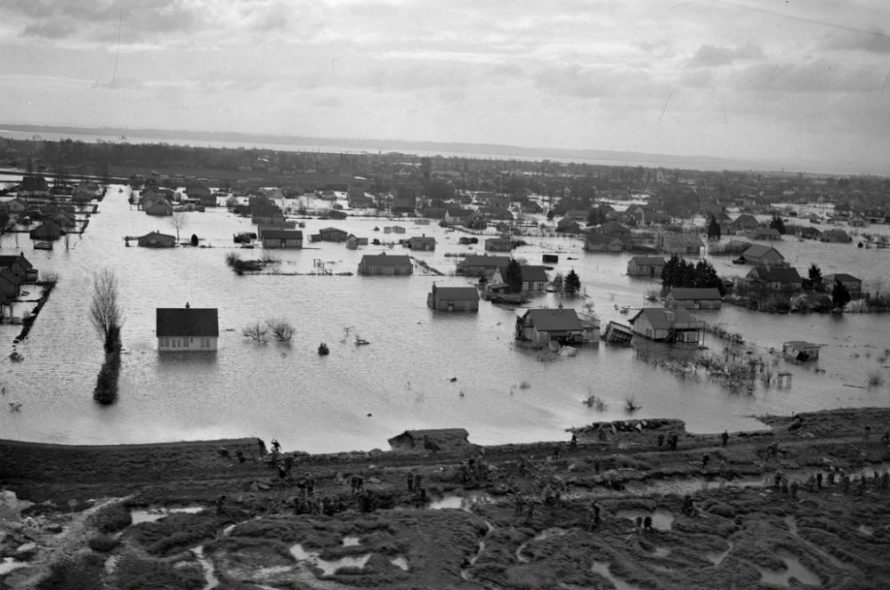The North Sea flood of 1953 was one of the largest natural disasters ever experienced in the UK. Caused by a heavy storm surge that struck the Netherlands, north-west Belgium, England and Scotland, it resulted in almost 1,000 miles of British coastline being damaged, sea walls breached in 1,200 places, and extensive flooding across 65,000 ha.
In the night of of 31 January 1953, a combination of wind, high spring tide, and low pressure caused the sea to sweep up to two miles inland, 5.6 metres above mean sea level, with huge tides surging down the coast between the Tees and the Thames.

By the morning, an estimated 307 people had lost their lives in English coastal towns and villages, 30,000 people were forced from their homes due to the flooding, and 24,000 properties were badly damaged.
The devastation caused by the storm highlighted the vulnerability of the low lying east coast areas of the UK to this type of flooding, including London and the Thames Estuary, and was the driver for the development of an East Coast Flood Model as the first flood catastrophe model for the UK by RMS.
You can find more information about the anniversary of the storm in a feature in the British Hydrological Society newsletter.
